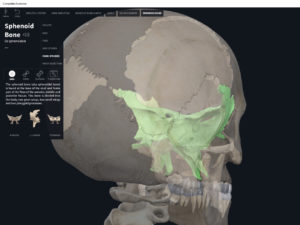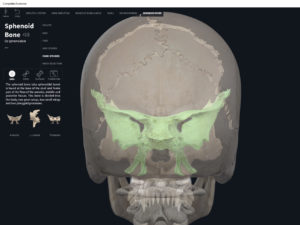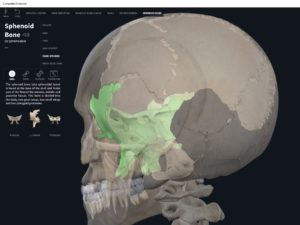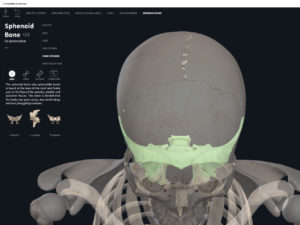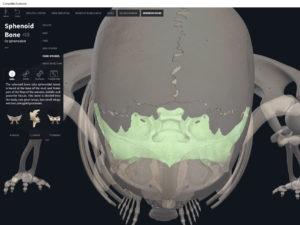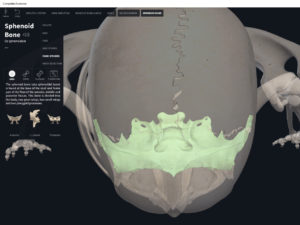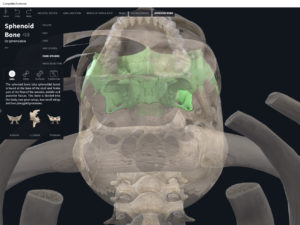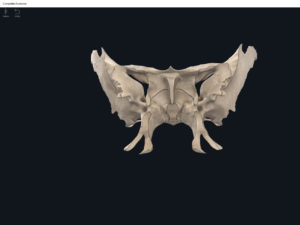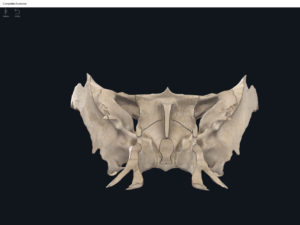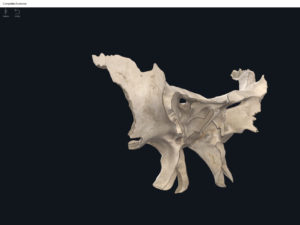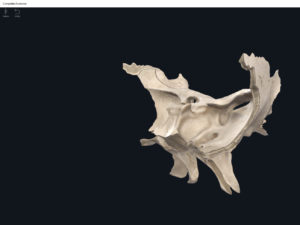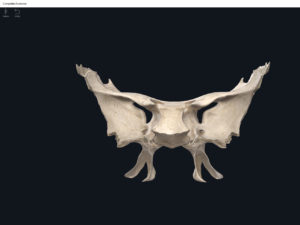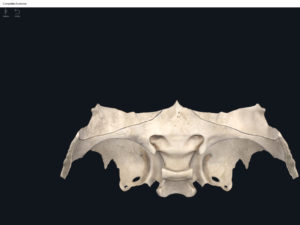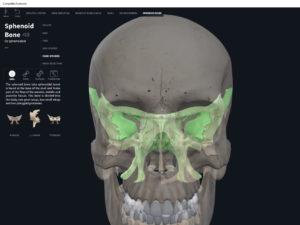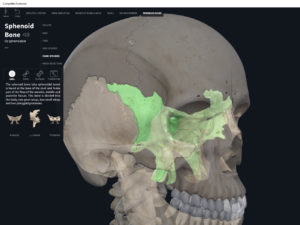Anatomy & Physiology: Bones—Skull, Sphenoid Bone.
Structure.
- The name means “wedge” but it’s often called the butterfly bone of the skull. Easily the most intricate of the cranial bones.
- Located in the middle of the base of skull, portion of the cranial floor; and is a keystone structure as it articulates with all the cranial bones—with the frontal bone anteriorly; with the parietal and temporal bones laterally; and with the occipital posteriorly. The sphenoid is posterior and superior to the nasal cavity. The sphenoid also forms part of the floor, sides and rear of the orbit.
- The “body” (frontal plane, anterior view) of the butterfly has two cavities called the sphenoid sinuses which drain to the nasal cavity.
- The “greater wings” (frontal plane, anterior view) are the large wings of the butterfly. Forms the anterolateral cranial floor and part of the lateral wall. There are 3 foramen: the foramen rotundum (round hole) allows passageway for the nerve for facial sensations; the foramen ovale (oval hole) a passage for the nerve that controls movement of the mandible; and the foramen spinosum (spinous hole) for the blood vessel supplying the membranes of the brain.
- The “lesser wings” (frontal plane, anterior view) are superior to the greater wings and almost look like whiskers. The optic foramen may be found close to where the lesser wing joins to the body of the butterfly. The lesser wings form part of the cranial floor, and also the posterior of the orbit.
- Sella turcica: “saddle” shaped smooth surface on the body of the sphenoid bone.
- Hypophyseal fossa: the depression of the sella turcica housing the pituitary gland.
- Pterygoid processes: two trailing wings (a pair on each side of the butterfly) inferior to the body. Serves as an attachment point for some of the muscles that help move the mandible.
- Superior orbital fissure: laterally between the greater and lesser wings; triangular slit for nerves that control eye movement.
Function.
Clinical Significance.
References
Biel, A. (2015). Trail guide to the body: A hands-on guide to locating muscles, bones and more.
Jenkins, G., & Tortora, G. J. (2012). Anatomy and Physiology: From Science to Life, 3rd Edition International Stu. John Wiley & Sons.
Muscolino, J. E. (2017). The muscular system manual: The skeletal muscles of the human body.

